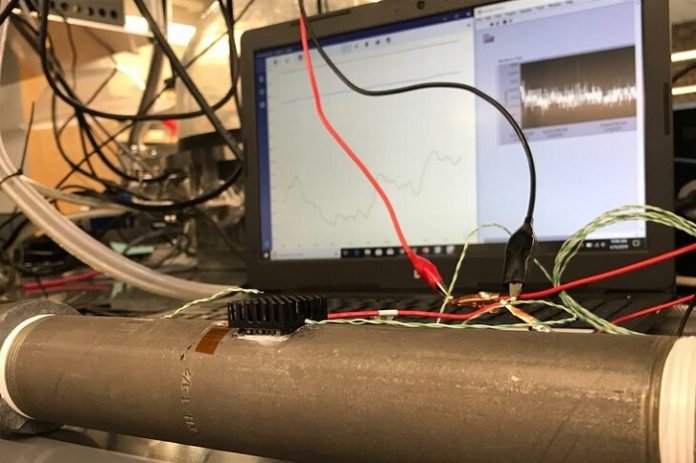
New matchbook-sized devices could convert wasted heat in our homes, offices and vehicles into an environmentally friendly source of electricity, according to a team of scientists.
“We can take advantage of sources of wasted heat all around us, for example the hot water lines in our homes,” said Shashank Priya, associate vice president for research and professor of materials science and engineering at Penn State.
“Normally all the residual heat coming off those pipes is lost into the atmosphere.
Now we are able to trap some and convert it to useful electricity.”
Thermoelectric devices reliably convert heat into electricity, but the technology has been inefficient in real-world conditions, the scientists said.
The new modules achieved high efficiencies previously obtained only in laboratory settings.
When the modules are placed near a heat source, electrons moving from the hot side to the cold side produce an electric current.
The devices have no moving parts and produce no chemical reactions or emissions, offering a promising source of clean energy, the scientists said.
The technology could also offer an alternative to air-conditioning units containing hydrofluorocarbons, a potent greenhouse gas.
If electricity is supplied to the devices, they become cold and condense humidity into ice, the scientists said.
“Penn State has developed an extensive expertise in the design of thermoelectric materials and devices that can be utilized for power generation and cooling,” Priya said.
“We have developed modeling, fabrication and testing capabilities in both materials and devices domains. Based on this work, it seems going forward thermoelectrics can make a big difference in power generation and cooling.”
The modules generated up to 28% higher power and 162% higher power density—power per unit mass of thermoelectric materials—compared to a commercial module when placed near hot water lines, the scientists reported in the American Chemical Society journal ACS Applied Materials & Interfaces.
“These uniquely designed thermoelectric generators employ nearly half the amount of thermoelectric materials used in commercial modules, making them less expensive as well as lightweight,” said Ravi Anant Kishore, a research engineer at the National Renewable Energy Laboratory, and co-author of the study.
“These modules can also be conveniently deployed on the human body to harvest body heat, thereby providing a continuous power source for wearable and implantable devices.”
The researchers showed the existence of a critical heat transfer coefficient—heat transferred per unit area under a given temperature difference between the thermoelectric surface and a heat source or ambient air—that can be used to optimize devices for different heat sources.
The devices resemble a row of small tables with two legs placed side by side. Changing the leg size, or aspect ratio, and the gaps between the legs, or fill fraction, can alter devices’ performance, the scientists said.
The scientists found a critical tipping point in the heat transfer coefficient that calls for a higher aspect ratio and lower fill fraction on one side, and a higher fill fraction and lower aspect ratio on the other.
The scientists said the findings provide concrete design criteria for developing modules and could have a transformative impact on the technology’s deployment.
“We were able to identify this boundary that provides quantitative guidance on the changes in thermoelectric module design depending upon the environment in which it is operating,” Priya said.
“We can’t just make a one-size-fits-all design for thermoelectric modules. The design should be dictated by where the deployment is occurring.”
The scientists have also developed materials that work best under different temperature ranges. Stacking multiple layers of modules, each optimized for a different temperature range, contributes to the improved efficiency, the researchers said.
The scientists fabricated every aspect of the modules from raw materials, and considered all the components, including the soldering and brazing used, in the design.
“The field of thermodynamics has been around for a long time, but has often taken a piecemeal approach,” he said.
“I think by looking at this comprehensively, we have provided a very good foundation for the community to make improvements to thermal electrical conversion devices.”
Written by Matthew Carroll.



